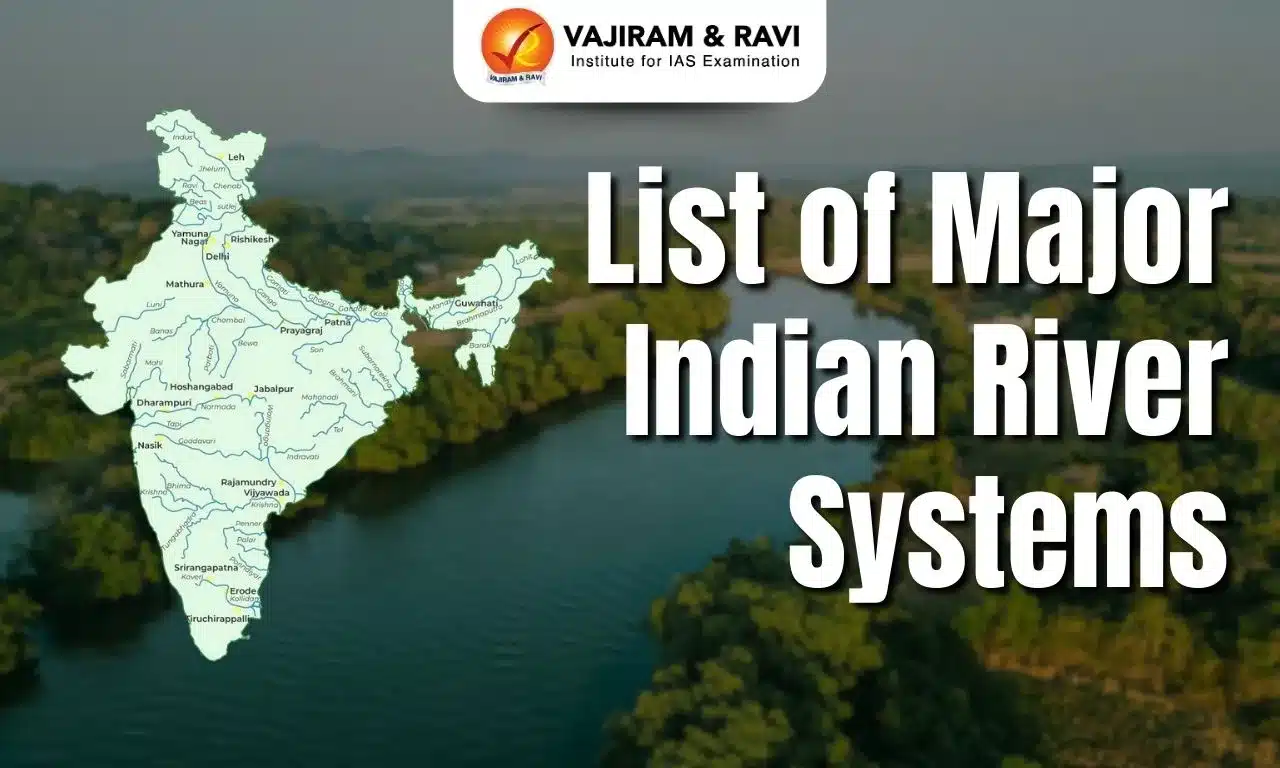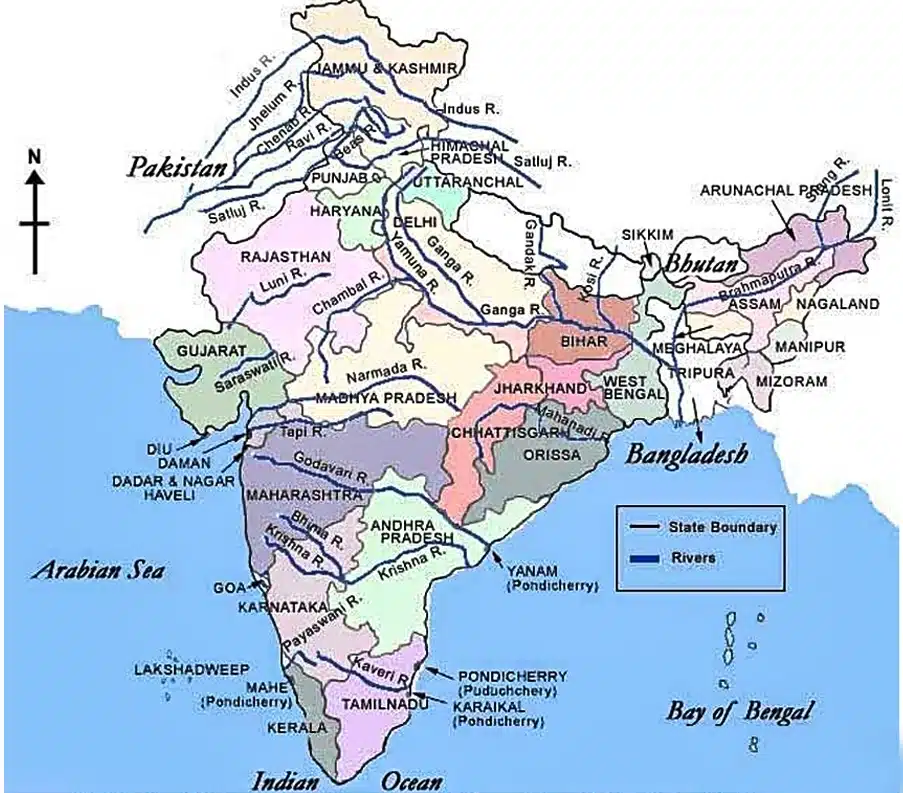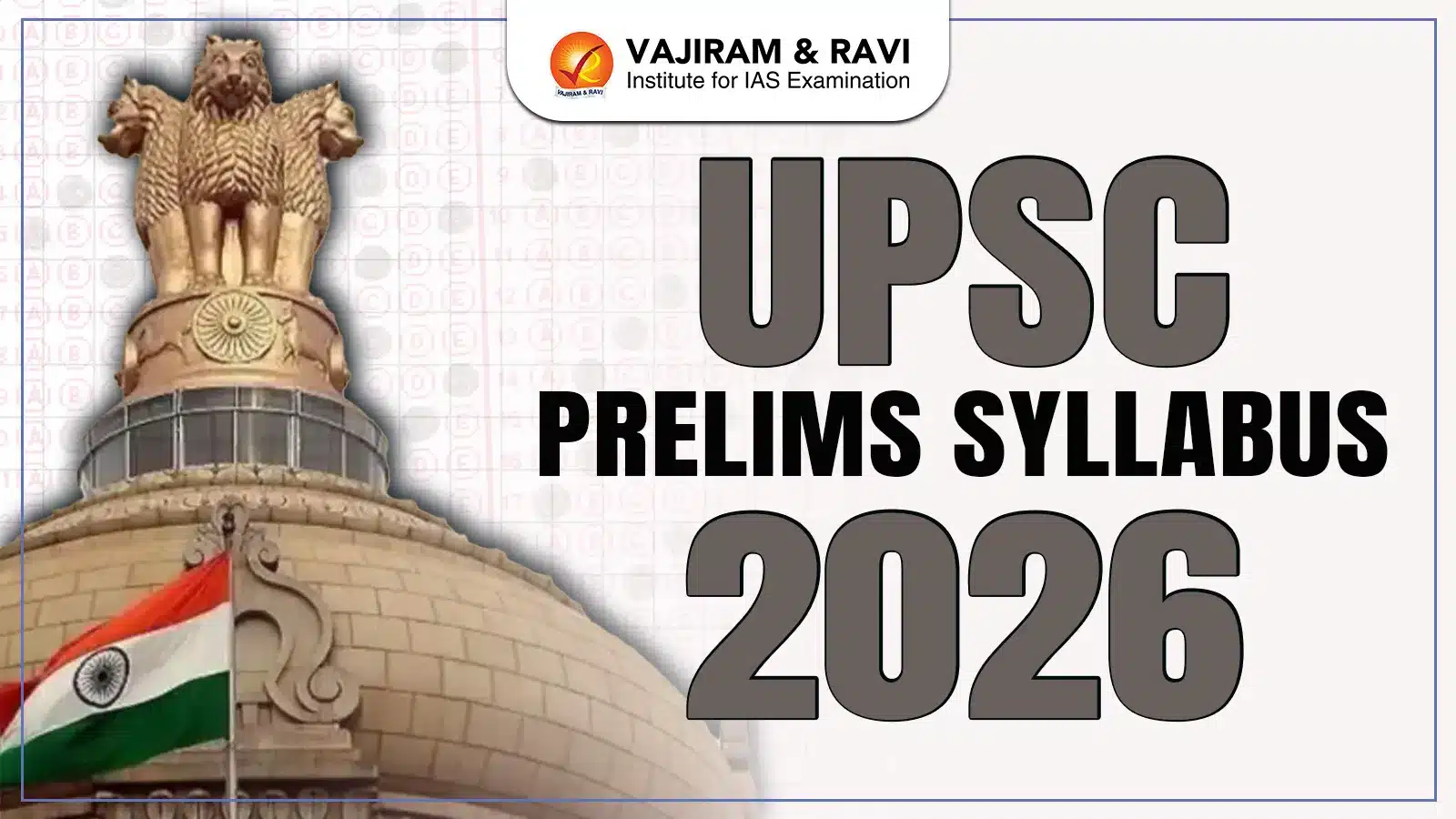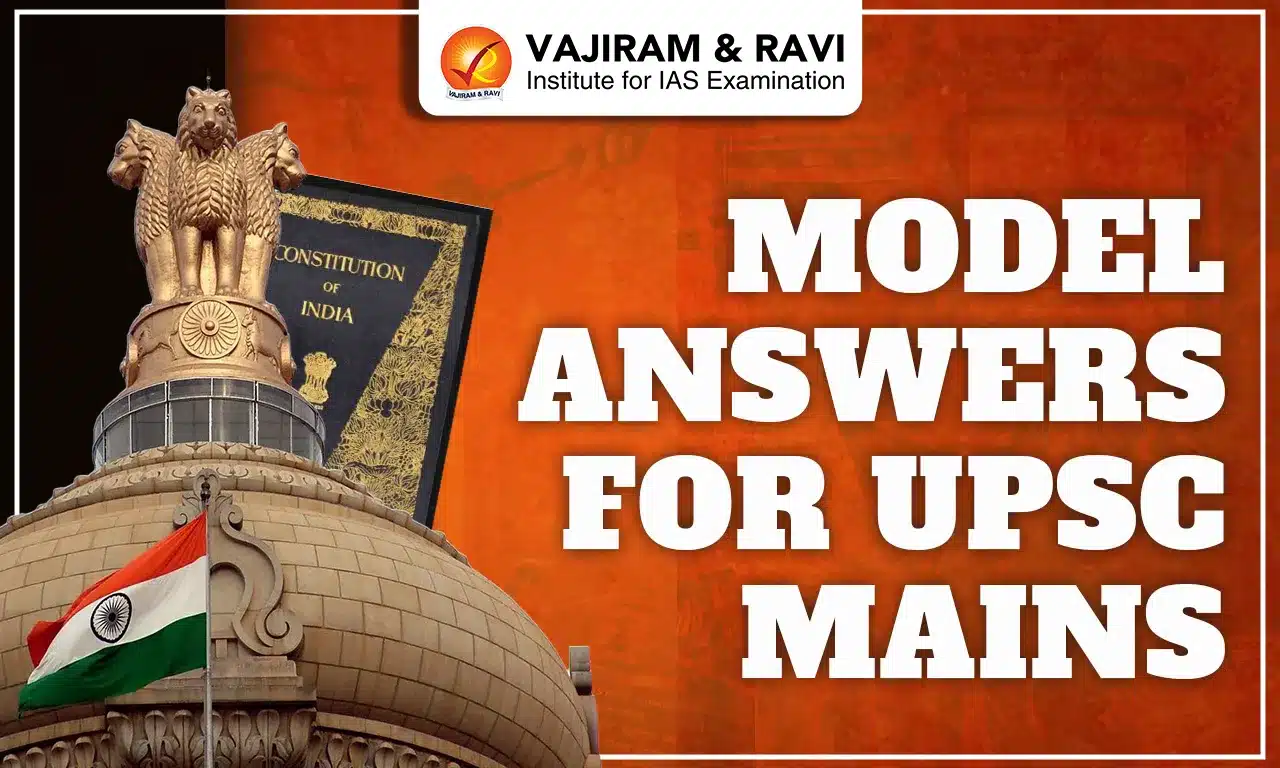Indian river systems play a vital role in shaping society, supporting irrigation, drinking water, transportation, and power generation, and providing livelihoods to millions. This is why most major Indian cities are located along riverbanks. Serving as the nation's lifeline, rivers influence geography, culture, and the economy by sustaining diverse ecosystems and fulfilling essential water needs for agriculture, industries, and daily life.
List of Major Indian River Systems
Most Indian Rivers confluence into the Bay of Bengal, while some in the west flow into the Arabian Sea. Regions like northern Aravalli, parts of Ladakh, and the Thar Desert have inland drainage. The country's major rivers originate from three primary watersheds: the Himalayas and Karakoram range, the Chota Nagpur plateau along with the Vindhya and Satpura ranges, and the Western Ghats.
| List of Major Indian River Systems | ||
|
River System |
Total length |
Length in India |
|
Indus River System |
3180 km |
1114 km |
|
Brahmaputra River System |
2900 km |
916 km |
|
Ganga River System |
2510 km |
2510 km |
|
Yamuna River System |
1376 km |
1376 km |
|
Narmada River System |
1312 km |
1312 km |
|
Tapi River System |
724 km |
724 km |
|
Godavari River System |
1465 km |
1465 km |
|
Krishna River System |
1400 km |
1400 km |
|
Kaveri River System |
805 km |
805 km |
|
Mahanadi River System |
851 km |
851 km |
Major Indian River Systems Map
These Major Indian River Systems are broadly divided into Himalayan Rivers and Peninsular Rivers based on their origin and flow characteristics. A Major Indian River Systems Map represents the vast network of rivers and their tributaries flowing across different regions of the country.
Indus River System
The Indus River originates from the northern slopes of the Kailash range near Lake Mansarovar in Tibet, spanning approximately 2,897 km, about 700 km of its course lies within India before it merges into the Arabian Sea near Karachi. It enters India through Jammu and Kashmir, carving a scenic gorge. In the Kashmir region, it meets tributaries like the Zaskar, Shyok, Nubra, and Hunza. Flowing between the Ladakh and Zaskar Ranges, it crosses the Himalayas via a 5,181-meter-deep gorge near Attock, north of Nanga Parbat. Its key Indian tributaries include the Jhelum, Ravi, Chenab, Beas, and Sutlej.
Brahmaputra River System
The Brahmaputra River originates from Mansarovar Lake, which also serves as the source of the Indus and Sutlej rivers. Stretching 3,848 km, it is slightly longer than the Indus, with most of its course outside India. Flowing eastward parallel to the Himalayas, it takes a U-turn at Namcha Barwa and enters Arunachal Pradesh as the Dihang River. Passing through Arunachal Pradesh and Assam, it connects with multiple tributaries and has a braided channel in Assam. Known as the Tsangpo in Tibet, it carries less water and silt there but gains volume and sediment in India due to heavy rainfall, often causing floods in Assam and Bangladesh.
Ganga River System
The Ganga River originates as the Bhagirathi from the Gangotri Glacier. Before reaching Devprayag in Uttarakhand’s Garhwal region, several rivers merge into it, Mandakini, Pindar, Dhauliganga, and Bishenganga into the Alaknanda, while the Bheling joins the Bhagirathi. The Pindar River, originating from East Trishul and Nanda Devi, meets the Alaknanda at Karnaprayag, and the Mandakini joins at Rudraprayag. At Devprayag, the Bhagirathi and Alaknanda combine to form the Ganga.
Panch Prayag (Five Confluences):
- Vishnuprayag – Alaknanda meets Dhauli Ganga
- Nandprayag – Alaknanda meets Nandakini
- Karnaprayag – Alaknanda meets Pindar
- Rudraprayag – Alaknanda meets Mandakini
- Devprayag – Alaknanda meets Bhagirathi, forming the Ganga
The Ganga’s major tributaries include the Yamuna, Damodar, Sapta Kosi, Ram Ganga, Gomati, Ghaghara, and Son. After traveling 2,525 km from its source, it merges into the Bay of Bengal.
Yamuna River System
The Yamuna River is the largest tributary of the Ganga, originating from the Yamunotri Glacier near Bandarpoonch Peak in Uttarakhand. Its major tributaries include the Sin, Hindon, Betwa, Ken, and Chambal, with the Tons being the largest. The river's area spans Delhi, Himachal Pradesh, Uttar Pradesh, Haryana, Rajasthan, and Madhya Pradesh.
Narmada River System
The Narmada River, one of central India's major rivers, originates from the Amarkantak Hill in Madhya Pradesh. It traditionally marks the boundary between North and South India. Unlike most peninsular rivers, the Narmada, along with the Tapti and Mahi, flows westward. Passing through Madhya Pradesh, Gujarat, and Maharashtra, it eventually merges into the Arabian Sea in Gujarat’s Bharuch district.
Tapi River System
The Tapi River, a significant central Indian river, flows westward, unlike most peninsular rivers. Originating from the Eastern Satpura Range in Madhya Pradesh, it covers key regions such as Madhya Pradesh’s Nimar, Maharashtra’s East Vidarbha and Khandesh, and South Gujarat before merging into the Arabian Sea’s Gulf of Cambay. Its basin primarily covers eastern and northern Maharashtra, along with parts of Madhya Pradesh and Gujarat. Major tributaries include the Waghur, Aner, Girna, Purna, Panzara, and Bori rivers.
Godavari River System
The Godavari River, India's second-longest, is often called the Dakshin (South) Ganga or Vriddh (Old) Ganga. Originating from Trimbakeshwar near Nashik, Maharashtra, it flows southeast through Madhya Pradesh, Telangana, Andhra Pradesh, and Odisha before merging into the Bay of Bengal. The river forms a fertile delta at Rajahmundry and hosts several pilgrimage sites like Nashik, Bhadrachalam, and Trimbak. Major tributaries include Pranahita, Indravati, Bindusara, Sabari, and Manjira. Asia’s largest rail-cum-road bridge, linking Kovvur and Rajahmundry, spans the Godavari. It is a seasonal river, shrinking in summer and expanding during monsoons.
Krishna River System
The Krishna River, one of India's longest, originates from Mahabaleshwar in Maharashtra and flows through Maharashtra, Karnataka, Telangana, and Andhra Pradesh before draining into the Bay of Bengal. Its major tributary is the Tungabhadra, formed by the Tunga and Bhadra rivers originating in the Western Ghats. Other significant tributaries include the Dudhganga, Koyna, Bhima, Mallaprabha, Dindi, Ghataprabha, Warna, Yerla, and Musi rivers.
Kaveri River System
The Kaveri River originates from Talakaveri in the Western Ghats, a renowned pilgrimage and tourist site in Karnataka’s Kodagu district. Flowing through Karnataka and Tamil Nadu, it drains into the Bay of Bengal. The river has historically supported ancient kingdoms and modern cities by facilitating irrigation and agriculture. Its major tributaries include Arkavathy, Shimsha, Hemavati, Kapila, Honnuhole, Amaravati, Lakshmana Kabini, Lokapavani, Bhavani, Noyyal, and Tirtha.
Mahanadi River System
The Mahanadi River originates from the Satpura Range in central India and flows eastward into the Bay of Bengal. It passes through Maharashtra, Chhattisgarh, Jharkhand, and Odisha. The river is home to the Hirakud Dam, the largest dam built on it.
Last updated on January, 2026
→ Check out the latest UPSC Syllabus 2026 here.
→ Join Vajiram & Ravi’s Interview Guidance Programme for expert help to crack your final UPSC stage.
→ UPSC Mains Result 2025 is now out.
→ UPSC Notification 2026 is scheduled to be released on January 14, 2026.
→ UPSC Calendar 2026 is released on 15th May, 2025.
→ UPSC Prelims 2026 will be conducted on 24th May, 2026 & UPSC Mains 2026 will be conducted on 21st August 2026.
→ The UPSC Selection Process is of 3 stages-Prelims, Mains and Interview.
→ UPSC Result 2024 is released with latest UPSC Marksheet 2024. Check Now!
→ UPSC Toppers List 2024 is released now. Shakti Dubey is UPSC AIR 1 2024 Topper.
→ Also check Best IAS Coaching in Delhi
Major Indian River Systems FAQs
Q1. What are 8 major river systems in India?+
Q2. How many Indian river systems are there?+
Q3. What are the five river systems in India?+
Q4. How many river systems are in India class 9?+
Q5. Are there 400 rivers in India?+


















